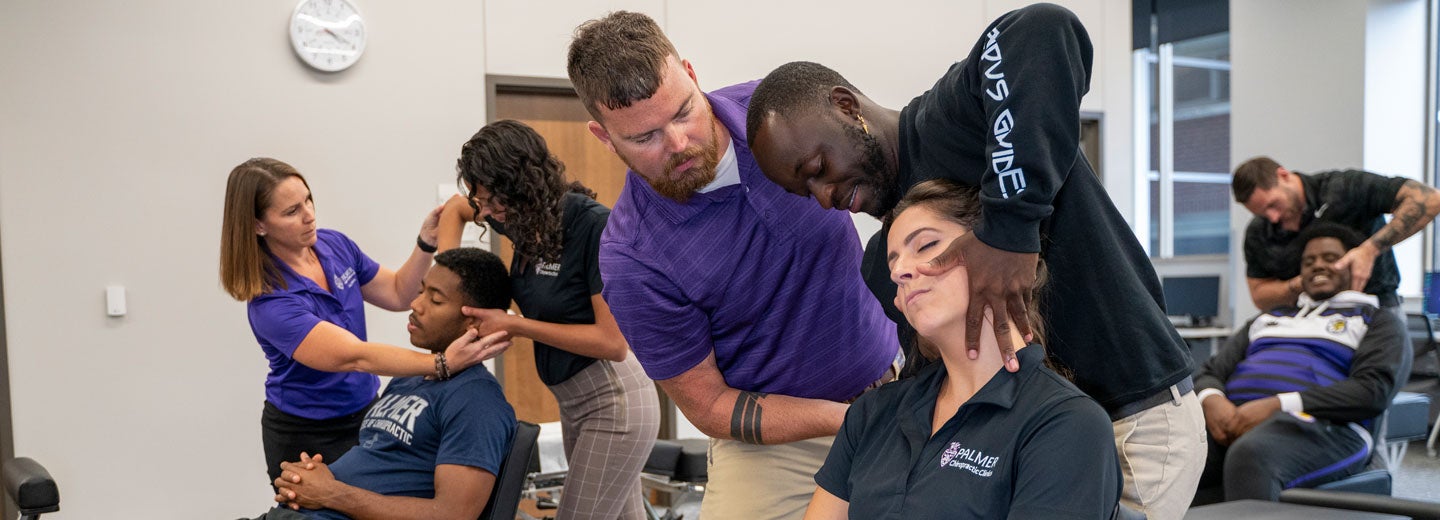Palmer College of Chiropractic is the first and largest college of chiropractic. D.D. Palmer discovered chiropractic right here in Davenport, Iowa. Now, students can choose top-quality education at two campuses: Palmer’s Main Campus in Davenport, Iowa; and Palmer Florida in Port Orange, Florida.
1. Why Palmer?
Palmer College is The Trusted Leader in Chiropractic Education®. Experience an academic program that blends theory with hands-on practice, delivered by faculty who are recognized as the best in the profession.
Plus, Palmer is home to the world’s leading chiropractic research program, the most highly funded chiropractic research effort in the nation.
2. What degrees can I earn at Palmer?
Palmer College is focused on what started it all — chiropractic. Students earn their prestigious Doctor of Chiropractic degree.
Palmer’s Main Campus also offers a Bachelor of Science degree completion program, allowing students to simultaneously take courses that meet the requirements of their B.S. and D.C. degrees under many of the same professors. This helps students save time and money by completing their undergraduate degree while also completing the first year of their D.C. degree.
3. How long does it take to become a chiropractor?
Palmer students attend classes year-round and finish the Doctor of Chiropractic program in just over three years. The program is 10 trimesters long.
4. What are chiropractic school requirements?
While each prospective student is considered on an individual basis, Palmer College has prerequisites that all students must meet.
- Main Campus: 90 semester credit hours (or 135 quarter hours).
- Palmer Florida: Applicants must have a Bachelor’s degree prior to enrolling.
- 24 semester hours in life and physical sciences — half of those courses with labs.
- Preferred science courses, including A+P and Chemistry.
More prerequisites may be found at palmer.edu/admissions/admissions-requirements/.
For the best information on attending Palmer College, contact an admissions counselor.
5. What are the class sizes at Palmer?
While class sizes depend on the class or lab, Palmer’s 15:1 student-to-faculty ratio means students receive the academic attention and support to help them succeed.
6. Does Palmer offer benefits for U.S. veterans?
Palmer College fully participates in the Yellow Ribbon program, offering up to a year of full tuition to eligible veterans.
Palmer is dedicated to our military and veterans and has provided more than $6 million in pro-bono care to military members through Palmer Chiropractic Clinics across all three campuses since the program began in 2008.
Additionally, some students will have the opportunity to participate in the DoD/VA Student Rotation Program, working with staff chiropractors in a Department of Defense or Veterans Affairs hospital/clinic at one of more than 50 participating locations across the country.


